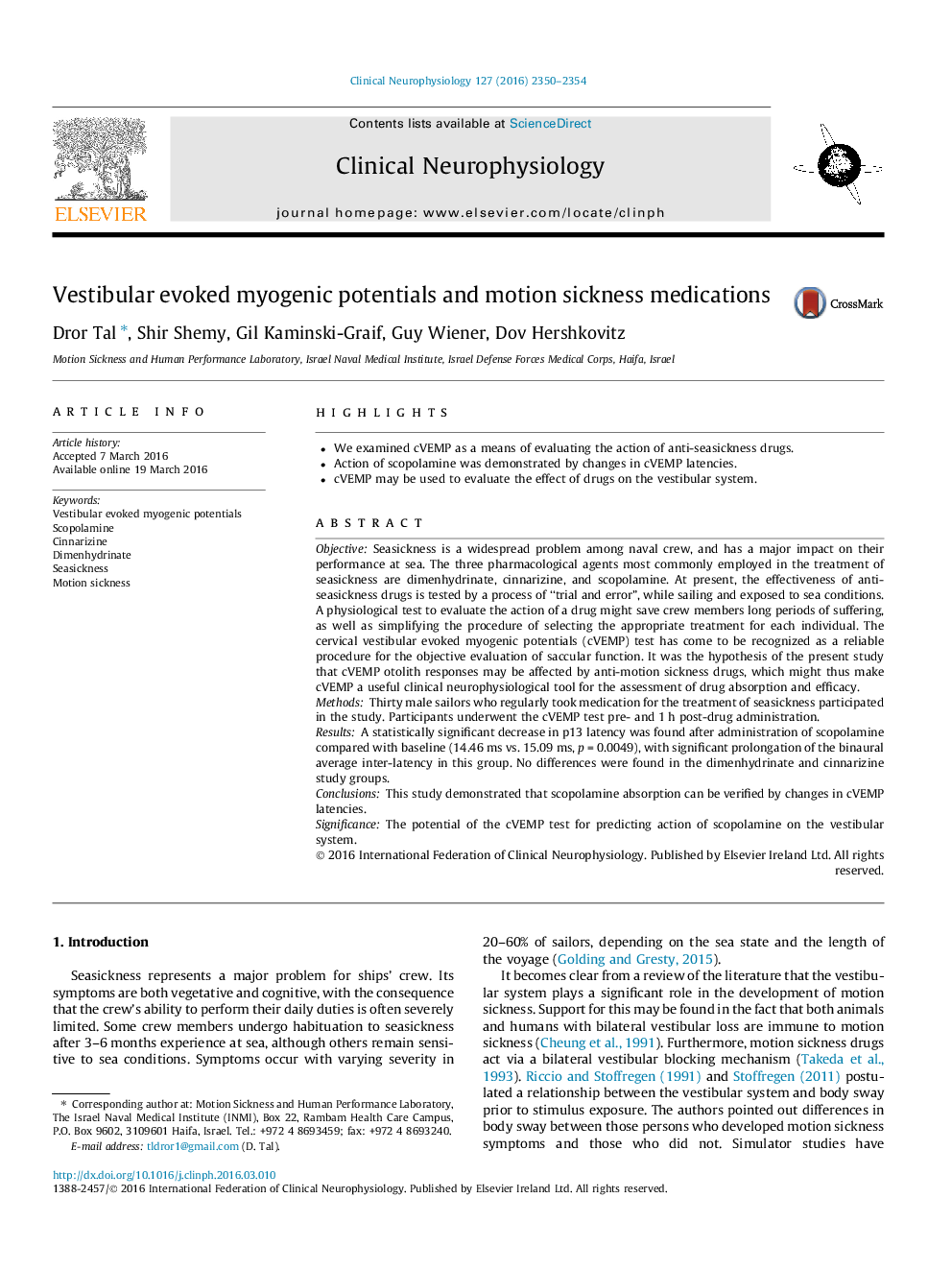| کد مقاله | کد نشریه | سال انتشار | مقاله انگلیسی | نسخه تمام متن |
|---|---|---|---|---|
| 3042755 | 1184958 | 2016 | 5 صفحه PDF | دانلود رایگان |
• We examined cVEMP as a means of evaluating the action of anti-seasickness drugs.
• Action of scopolamine was demonstrated by changes in cVEMP latencies.
• cVEMP may be used to evaluate the effect of drugs on the vestibular system.
ObjectiveSeasickness is a widespread problem among naval crew, and has a major impact on their performance at sea. The three pharmacological agents most commonly employed in the treatment of seasickness are dimenhydrinate, cinnarizine, and scopolamine. At present, the effectiveness of anti-seasickness drugs is tested by a process of “trial and error”, while sailing and exposed to sea conditions. A physiological test to evaluate the action of a drug might save crew members long periods of suffering, as well as simplifying the procedure of selecting the appropriate treatment for each individual. The cervical vestibular evoked myogenic potentials (cVEMP) test has come to be recognized as a reliable procedure for the objective evaluation of saccular function. It was the hypothesis of the present study that cVEMP otolith responses may be affected by anti-motion sickness drugs, which might thus make cVEMP a useful clinical neurophysiological tool for the assessment of drug absorption and efficacy.MethodsThirty male sailors who regularly took medication for the treatment of seasickness participated in the study. Participants underwent the cVEMP test pre- and 1 h post-drug administration.ResultsA statistically significant decrease in p13 latency was found after administration of scopolamine compared with baseline (14.46 ms vs. 15.09 ms, p = 0.0049), with significant prolongation of the binaural average inter-latency in this group. No differences were found in the dimenhydrinate and cinnarizine study groups.ConclusionsThis study demonstrated that scopolamine absorption can be verified by changes in cVEMP latencies.SignificanceThe potential of the cVEMP test for predicting action of scopolamine on the vestibular system.
Journal: Clinical Neurophysiology - Volume 127, Issue 6, June 2016, Pages 2350–2354
